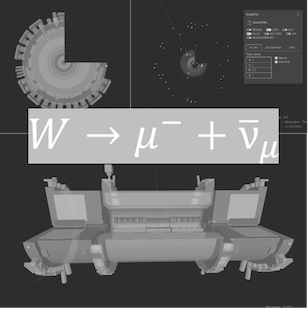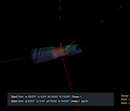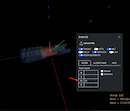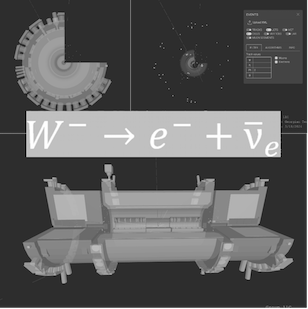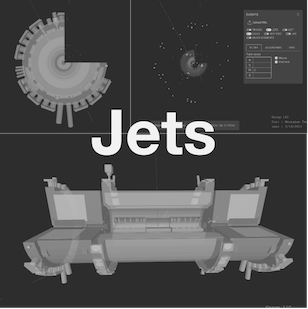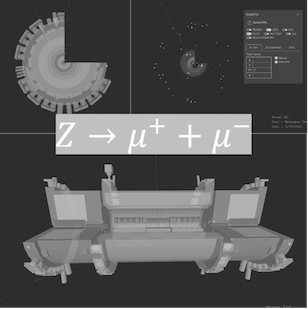Identifying Events with Tracer
Here, you'll learn how the events mentioned before look in Tracer 3D Display.
You will get to use your knowledge about identifying elementary particles.
You'll learn to choose events with a W particle as signal events and to distinguish them from the background events. Again, you'll find explanations about this in the form of a picture gallery.
Przypadki sygnału
-
 In the end view you can see the signature of an electron with high transverse momentum and a neutrino (Missing ET = 27 GeV) going in the opposite direction.
In the end view you can see the signature of an electron with high transverse momentum and a neutrino (Missing ET = 27 GeV) going in the opposite direction.
-
 Informacja na temat leptonu dowodzi, że rzeczywiście jest to elektron (zwróćmy uwagę na ujemny znak ładunku elektrycznego).
Informacja na temat leptonu dowodzi, że rzeczywiście jest to elektron (zwróćmy uwagę na ujemny znak ładunku elektrycznego).
Przypadki tła
-
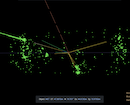 Ten przypadek odróżnia się od przypadków sygnału, ponieważ widać strumienie cząstek.
Ten przypadek odróżnia się od przypadków sygnału, ponieważ widać strumienie cząstek.
-
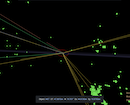 This picture shows an even more enlarged view of the event.
You can see very well how the bundles of particles originate from the interaction vertex (red).
This picture shows an even more enlarged view of the event.
You can see very well how the bundles of particles originate from the interaction vertex (red).
-
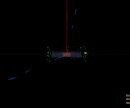 Tutaj został przedstawiony przypadek z rozpadem cząstki Z, która jest elektrycznie obojętną cząstka pośredniczącą w oddziaływaniach słabych. Rozpadła się ona na mion i antymion natychmiast po utworzeniu.
Tutaj został przedstawiony przypadek z rozpadem cząstki Z, która jest elektrycznie obojętną cząstka pośredniczącą w oddziaływaniach słabych. Rozpadła się ona na mion i antymion natychmiast po utworzeniu.
-
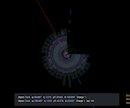 As you can see from this view into the direction of the proton beam muon and anti-muon going back to back.
Both particles might arise from one particle that decayed after its creation.
Cross-checks are always better in order to proof the assumption that a Z particle was produced.
Both muons have distinct electric charges.
As you can see from this view into the direction of the proton beam muon and anti-muon going back to back.
Both particles might arise from one particle that decayed after its creation.
Cross-checks are always better in order to proof the assumption that a Z particle was produced.
Both muons have distinct electric charges.
-
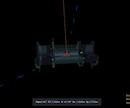 Furthermore there is no missing transverse momentum at all, meaning: A neutrino was probably not produced.
Furthermore there is no missing transverse momentum at all, meaning: A neutrino was probably not produced.
